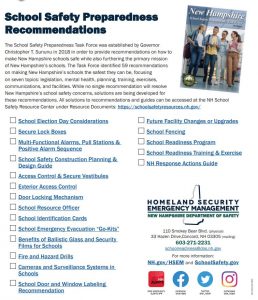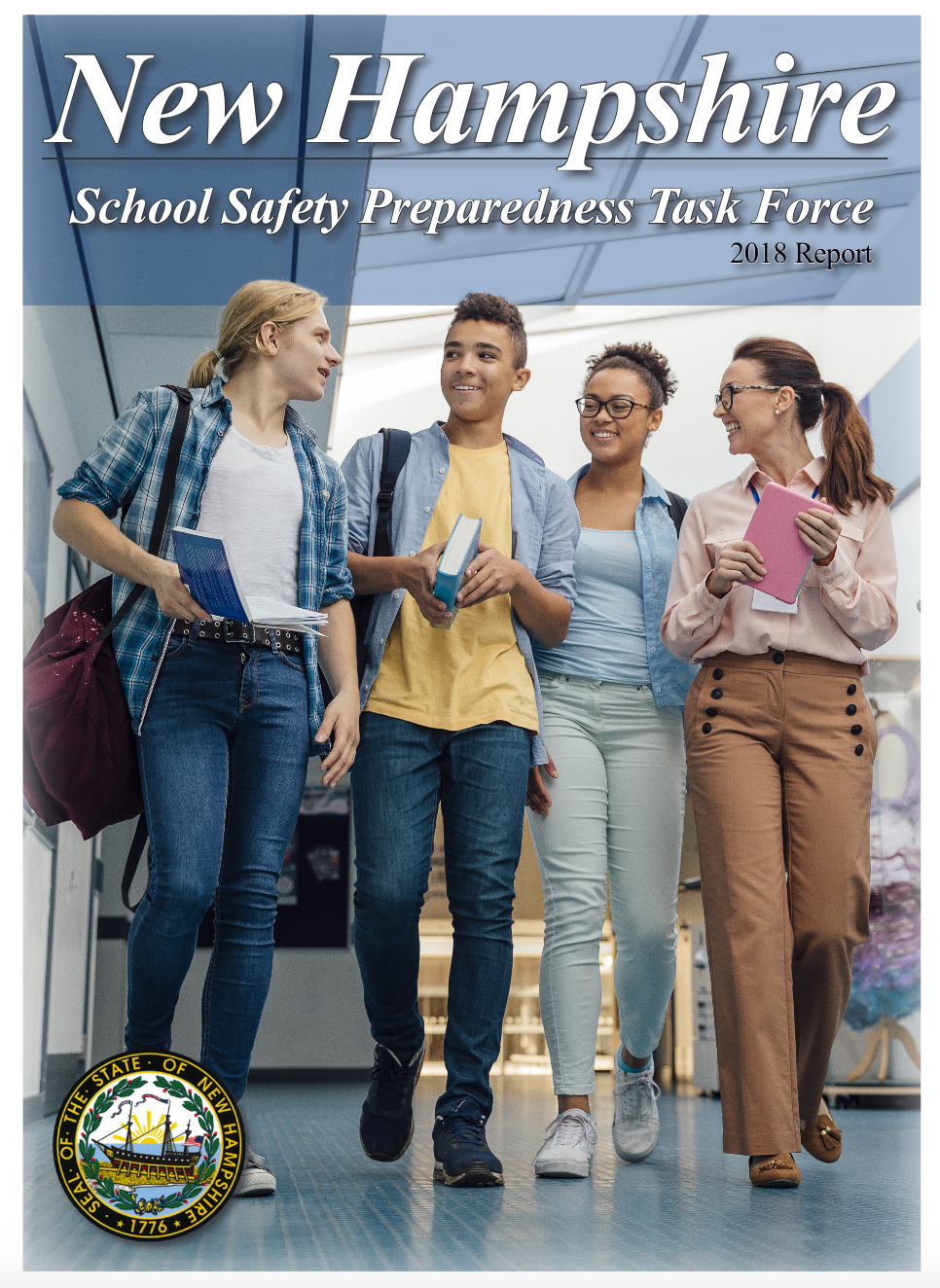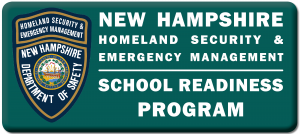School Safety Partners, Targeted violence refers to violence that is premeditated and directed at specific individuals, groups, or locations. It is distinct from violence that is spontaneous, random, or impulsive, and is often distinguished by pre-attack behaviors that suggest violence as a possible outcome. Schools can actively work to address the threat of targeted violence …
Category: Planning
The Task Force identified the following critical planning areas in school safety: school assessments and reassessments; reunification planning; schools as polling places; predetermined responses; emergency go-kits; and technology. This section provides resources in those planning areas.
Emergency Evacuation Go Kits (HSEM) [October 2022]
In case of an emergency evacuation, it is critical that every classroom and the administration maintaina “go kit,” a self-contained and portable stockpile of emergency supplies, often placed in a backpack orbucket and left in a readily accessible but secure location so that it is ready to “go.” The school safety planshould reference the go …
Child Exploitation Resources for the K-12 Community (Schoolsafety.gov) [February 2023]
Protect children from exploitation by recognizing the risk factors and warning signs, knowing how to respond, and supporting students who have been victimized. Child exploitation can take many forms and affect young people of any background, demographic, or geographic location. Victimization can take place directly on school ground as well as through online or social …
Foundations of Targeted Violence Prevention eLearning (DHS) [February 2023]
DHS, Wisconsin DOJ, and Wisconsin DPI Partner to Launch Targeted Violence Prevention Course Washington, DC – The Department of Homeland Security (DHS), Office of Intelligence and Analysis, National Threat Evaluation and Reporting (NTER) Office has partnered with the Wisconsin Department of Justice (DOJ) and the Wisconsin Department of Public Instruction (DPI) to release an eLearning module …
Creating, Practicing, and Implementing Plans for Family Reunification Before, During and After an Emergency (REMS TA) [January 2023]
Emergency management planning is very important because many incidents, whether caused by hazards or threats, are unpredictable. When unpredictable incidents occur, they may prevent a normal school dismissal, thereby making it difficult for families to reunite with students. A Family Reunification Appendix can be created as a part of a school emergency operations plan (EOP) …
Scripted Messages and Emergency Notifications (NH HSEM) [November 2022]
The best practice for your school’s scripted messages and emergency notifications is to work in partnership with local first responder agencies to create an outreach plan and predetermine how information will be approved for release and who will provide that information. The following recommendations are provided as a guide to school staff who will conduct …
Best Practice Considerations for Armed Assailant Drills in Schools (NASP) [October 2022]
The National Association of School Psychologists, the National Association of School Resource Officers, and Safe and Sound Schools have partnered to provide updated guidance on Best Practice Considerations for Armed Assailant Drills in Schools. The author organizations represent key stakeholders in school safety and crisis planning, preparedness, and implementation. We have expertise and extensive first-hand experience with …
Best Practice Considerations for Armed Assailant Drills in Schools (National Association of School Psychologists, NASRO, and Safe Schools) [September 2022]
The National Association of School Psychologists, the National Association of School Resource Officers, and Safe and Sound Schools have partnered to provide this guidance on armed assailant training. The guidance reflects unique considerations within the school environment, including protecting both physical, and psychological safety. Resource: Download this guidance on armed assailant drills here
Averting Targeted School Violence (U.S. Secret Service) [September 2022]
In this most recent study, Averting Targeted School Violence: A U.S. Secret Service Analysis of Plots Against Schools, NTAC examined 67 disrupted plots against K-12 schools from 2006-2018. The key findings of the study are clear and consistent: Individuals contemplating violence often exhibit observable behaviors, and when community members report these behaviors, the next tragedy …









